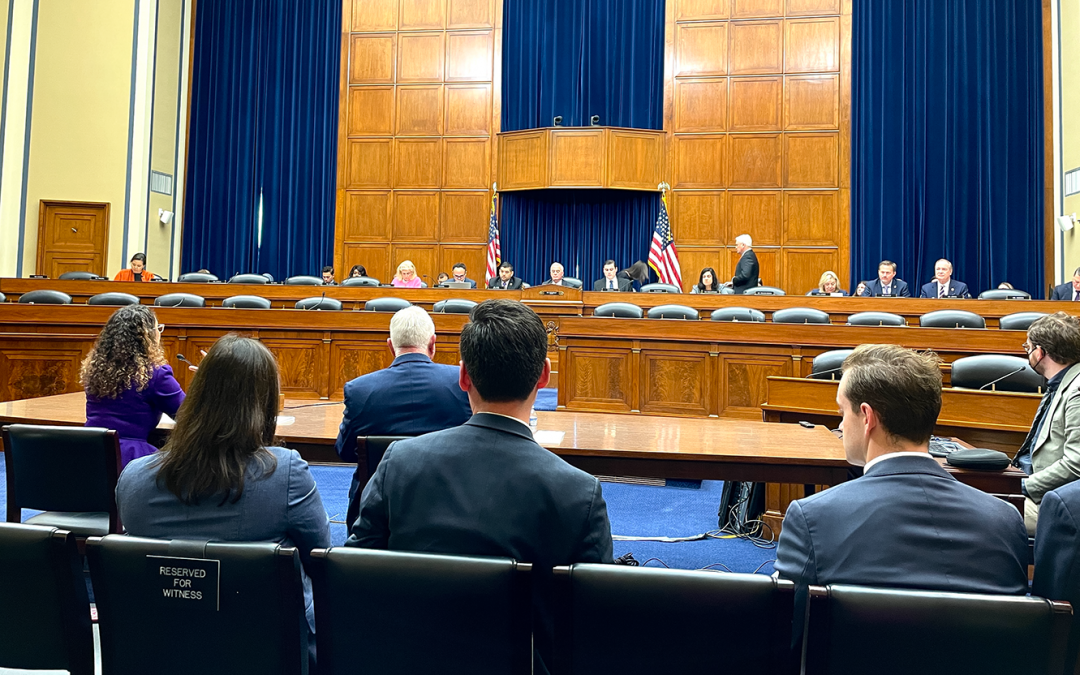WASHINGTON – Dr. Gerald W. Parker, chair of the National Science Advisory Board for Biosecurity (NSABB), told House lawmakers on Wednesday that research laboratories worldwide handling dangerous pathogens continue to pose a credible threat in producing future pandemics.
The research involves dual-use technologies where laboratories are conducting experiments on infectious diseases for essential research in advancing “health security, biodefense, and pandemic preparedness.”
The potential for biosecurity breaches or “malevolent” uses could be mitigated with staff training, lab maintenance, and proper reporting of breaches, according to Parker.
“Still, lab accidents happen, and they happen more often than you think. Most are quickly mitigated and contained, but some are more serious,” he said.
In March, President Biden called on Congress to pass $6.1 billion for the Centers for Disease Control Prevention to “enhance domestic and global disease surveillance, biosafety, and biosecurity efforts”, laboratory modernization, and supporting vaccine safety and effectiveness. Another $2.69 billion would also go to the NIH with some of those funds used to enhance biosafety and biosecurity.
Ranking member Rep. Raul Ruiz (D-Calif.) taking a jab at Republicans for their failure to nominate a Speaker of the House, an important step to continue with approving the government budget.
“Democrats in Congress are ready to get to work, but we’re of course, here listening to this important work, not able to move forward because the house is still in a standstill,” he said.
Chairman of the Select Subcommittee on the Coronavirus Pandemic, Rep. Brad Wenstrup (R-Ohio) emphasized that the virus’s possible origin from a “lab-related incident” in Wuhan, China, prompted an overview of how high-containment labs are regulated globally and domestically.
“We know that the United States isn’t immune to leaks,” Rep. Wenstrup said, “There’s been lab related accidents involving H1N1, H5N1 smallpox, tuberculosis and Zika.”
Rep. Ruiz reminded the committee that there was never a “for certain” conclusion on where Covid-19 began.
“Infectious diseases—no matter whether their origin is natural, accidental, or deliberate—do not respect borders,” said Dr. Jaime Yassif, vice president for Global Biological Policy and Programs at the Nuclear Threat Initiative (NTI).
Dr. Yassif spoke on the urgency of modernizing current standards and safety provisions for research facilities both domestically and globally to prevent “human casualties, political disruption and extensive economic damage.”
“We cannot say with confidence what the origins of COVID-19 are, but the fact that it’s even plausible that so much disruption could have been caused by a possible lab accident is a big blinking red light.”
In 2022, the World Health Organization released a framework for organizations to self govern dual-use research safely. It was the first world-wide framework for nations to develop their own methods to mitigate biorisks.
Dr. Yassif said that this international biosafety framework is primarily in the form of “guidelines and not regulations, so it is not enforceable.” She said another challenge is that these guidelines aren’t as specific as U.S. biosafety guidelines, which could be improved upon as well.
“We would have to make an investment in terms of capacity building, and partnership to really help raise the bar internationally, the level we’d like to see,” she said.
In 2023, the NSABB released 12 recommendations for the federal government to implement, many shared by Dr. Parker on Wednesday.
Dr. Parker highlighted that there should first be a comprehensive review of the current biorisk management framework, citing “unproductive compliance challenges” from the current fragmented system.
He attributed the challenges to a lack of a centralized federal agency focused on oversight of biosafety or biosecurity.
“But you have to do it in a way that’s going to not stifle scientific innovation,” he said.
He said the vast majority of infectious disease research is safe, but the small subset handling dangerous diseases, capable of pandemic spread, should be incentivized to pursue safer alternatives to “to reduce or eliminate the need to generate especially dangerous pathogens.”
Dr. Parker’s recommendations go further than the NSABB report, calling for restricting this subset of dangerous research to a single laboratory, the National Biodefense Analysis and Analysis Center (NBACC). A consolidation would strengthen biosafety and reduce biosecurity risks along with lessening oversight burdens currently put on universities involved, according to him.
Lastly, Dr.Parker called on congress to fund an independent authority in charge of biosafety and biosecurity oversight, similar to the FAA’s Air Traffic Safety Oversight Service. Due to countries that may lack strong institutions of oversight, he said it’s an important measure when considering the expansion of high containment labs and readily available technologies worldwide.
“Because the United States is viewed as a model for biosafety and biosecurity, it will be necessary to make reforms at home to make the biggest difference worldwide,” he said.


